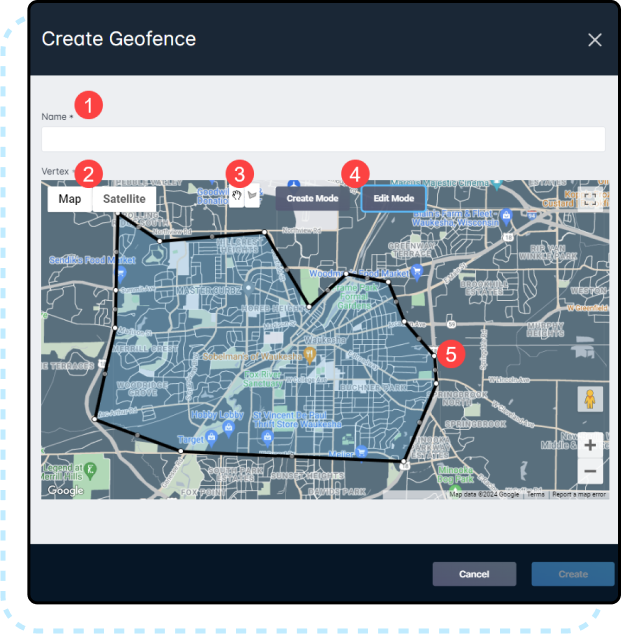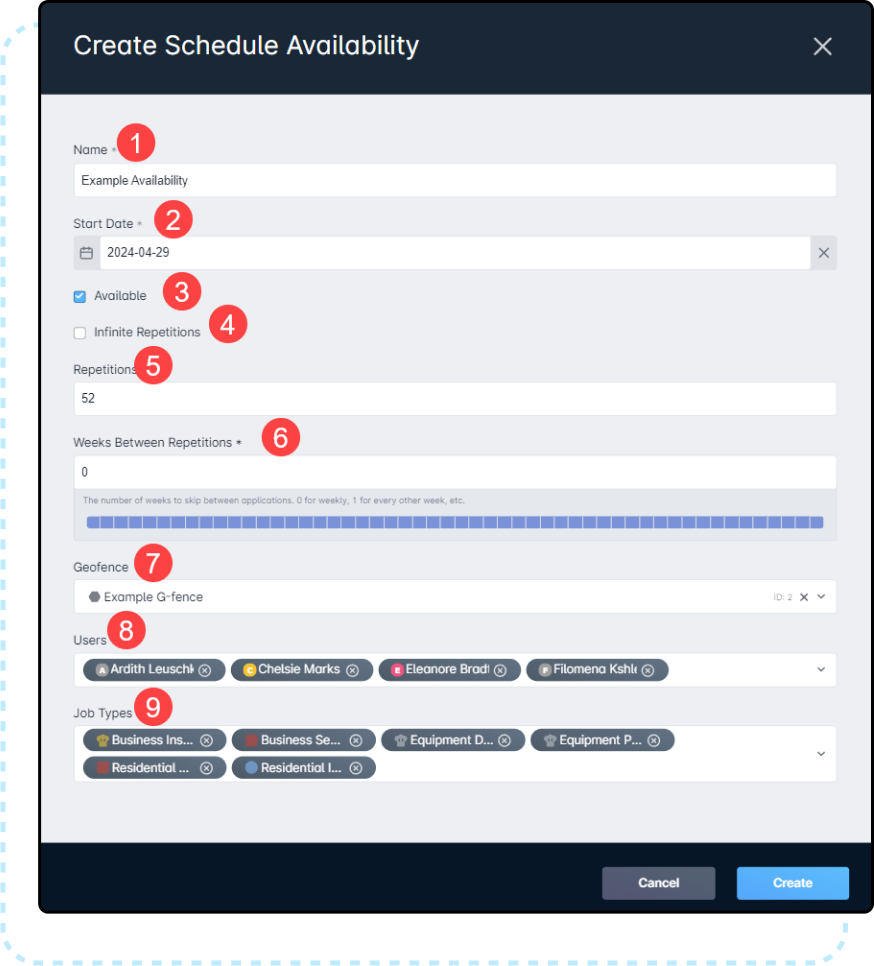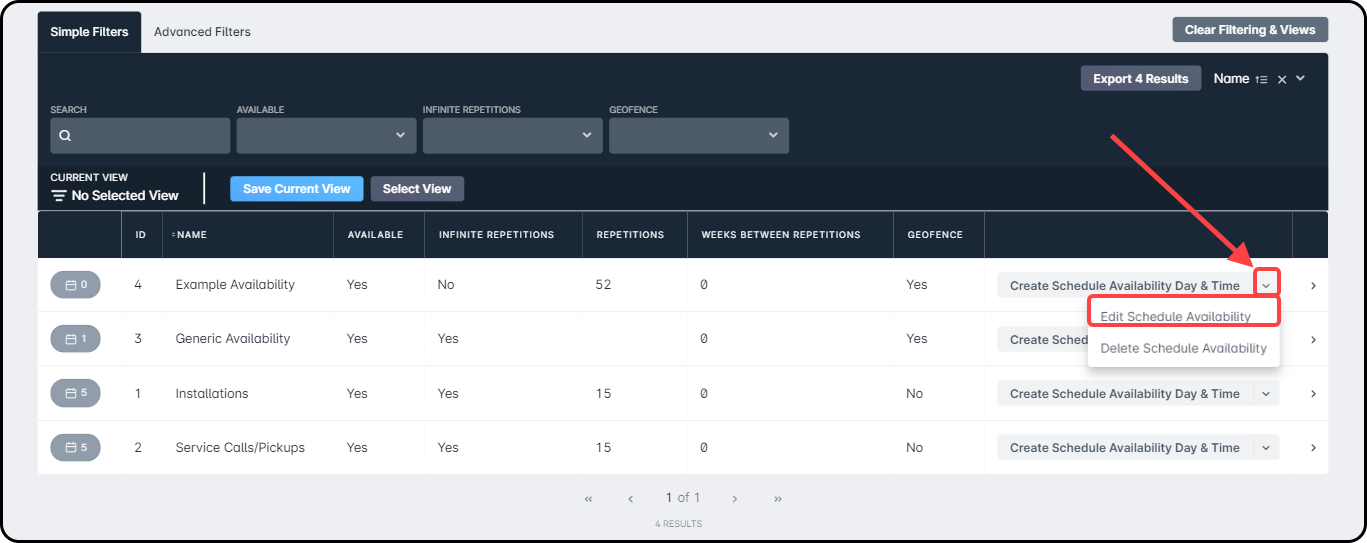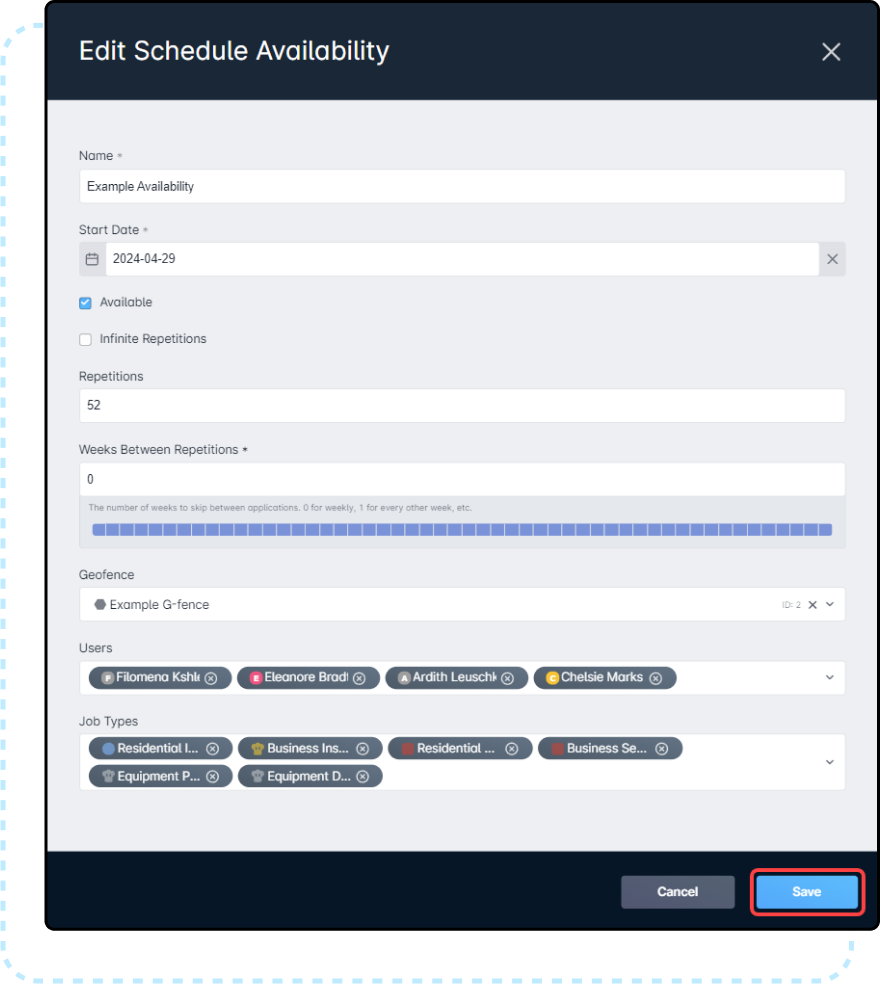Our Products & Services
Getting Started
First Time Setup
Getting Started With Jobs
Getting Started with Accounts
Getting Started with Inventory
Getting Started with Ticketing
Setting Sonar up for Billing
Baseline Configuration
How To: Using Sonar's Customer Portal
User Specific Resources
Accounts
Account Groups: Overview & Example Use Cases
Account List View: Overview
Account Management View: Overview
Account Overview Customization
Account Statuses: Overview & Example Use Cases
Account Types: Overview & Example Use Cases
Anchor & Linked Serviceable Addresses: Overview and Best Practices
Archiving an Account: Overview
CPUC Fixed Broadband Deployment by Address
Child Accounts: Best Practices & How Tos
Creating a New Account
Direct Messages: Overview
Disconnecting an Account
Disconnection Reason Management: Overview
Exploring Task Groups
FCC Broadband Data Collection (BDC) Filings: How Sonar Can Help
FCC Data Exports: General Overview and Usage
Future Serviceable Addresses: Overview
Lead Intake Form Processing
Notes: Best Practices & Use Cases
Scheduled Events: Overview & Use Cases
Serviceable Addresses: Overview and Usage
Specify Account ID upon Creation
Tasks & Task Templates: Overview
Using Sonar's FCC Broadband Label Generation Tool
Billing
ACH Batching: Overview
Accounts in Vacation Mode
Avalara: Overview & Setup
Batch Payments & Deposit Slips: Overview
Billing Calculator
Billing Defaults
Billing Settings
Building Packages
Building a Data Service
Canadian ACH tool
Changing Service Pricing in Sonar: Best Practices
Considerations When Using Avalara with Voice Services
Creating Discounts for Services and Packages
Delinquency Billing Best Practices
Delinquency Exclusions: Overview and Use Cases
Dual Data Services: Overview
Email Invoice Batch: Overview
General Ledger Codes: Overview
General Transactions: Best Practices
How Sonar Prorates Billing
How to Take Bank Account Payments
How to: Adding a Service to an Account
Invoice Templates: Overview
Leveraging PayPal as a Payment Method in Sonar
Manual Transactions
Multi-Month Billing & Multi-Month Services
Print to Mail
Printed Invoice Batches: Overview
Services: Overview
Setting Up Payment Methods and Taking Payments
Setting up Bank Account & Credit Card Processors
Taxes Setup
Usage Based Billing Policies: Overview and Usage
Usage Based Billing Policy Free Periods: Overview and Usage
Using Tax Exemptions - How To
Communication
Communications: Call Logs Overview & Best Practices
Communications: Messages Overview
Email Variables & Conditions
Message Categories: Overview & Use Cases
Phone Number Types: Overview and Use Cases
Saved Messages: Overview
Setting up an Outbound Email Domain
Trigger Explanations
Triggered Messages: Setup
Using Outbound SMS
Using the Mass Message Tool
Companies
How to: Setting Up a Company in Sonar
Managing Multiple Companies in Sonar: Best Practices
Rebranding your Sonar Instance
Financial
Contract Templates
Invoice Attachment Use Cases & PDF Examples
Invoice Messages: Overview & Use Cases
Invoices in Sonar: Examples, Creation & Contents
Integrations
Atlas Digital CORE Integration
Calix Cloud Data Field Mappings
Calix SMx Integration: Overview
CrowdFiber Integration
External Marketing Providers
GPS Tracking Providers: Overview
GoCardless Integration: Overview & Setup
How to Connect Cambium to your Sonar Instance
How to Connect Preseem to your Sonar System
How to: Using Webhooks in Sonar
Integrating with Calix Cloud
RemoteWinBox - Integration with Sonar
Sonar Retain: AI-Powered Customer Retention & Quality Intelligence
The Sonar Field Tech App
Tower Coverage Integration: Overview
VETRO FiberMap V2 Integration: Overview
VETRO FiberMap V3 Integration: Overview
Webhooks in Sonar: Basic PHP Example
iCalendar Integration
Inventory
Inventory List View: Overview
Inventory Model Management: General Overview
Network Inventory: How-to & Usage Guide
Segmentable Inventory: How-to & Usage Guide
Setup of Inventory: Manufacturers, Categories, and Assignees
Tracking and Using Consumable Inventory
Jobs
Applying Task Templates to Jobs
Edit Job Options
Example Jobs & Templates
Geofences: Overview
Job Types: Best Practices
Jobs and Scheduling: Overview
Scheduling How-to: Creating and Booking a Job
Scheduling Week View: Overview
Setting Up Schedules General Overview
Mapping
Misc.
Combining Custom Fields & Task Templates for Information Storage
Custom Fields Overview & Use Cases
Custom Links: Overview
Task Templates Overview & Use Cases
Monitoring
Building Alerting Rotations
Building a Monitoring Template
Poller Troubleshooting
Pollers: General Overview, Deployment Strategy, Build Out & Setup
Networking
Adtran Mosaic Cloud Platform Integration: Overview
Assigning RADIUS Addresses
Assigning an IP Address Using Sonar's IPAM: How to
Automating IP Assignments, Data Rates, and Network Access in Sonar
Building Address Lists
Building RADIUS Groups
Building a Device Mapper
Cable Modem Provisioning
Controlling Customer Speeds with Sonar: General Overview
DHCP Delivery
Data Usage Available Methods
Finding your OIDs
FreeRADIUS 3: Build-Out & Integration
How Sonar Communicates - Egress IPs Explained
IP Assignments & Sonar
IPAM: Basic Setup
IPAM: Overview
LTE Integration
MikroTik as an Inline Device: Integration With Sonar
MikroTik: Controlling Access
MikroTik: Controlling Speeds
MikroTik: Setting Up a Sonar Controlled DHCP Server
Netflow On-Premise Integration: Setup and Overview
Network Dashboard: Overview
Network Sites: Management View Overview
PacketLogic: Integration With Sonar
Pulse, Polling, and PHP
RADIUS: Build-Out & Integration with Sonar
RADIUS: Building Reply Attributes
Setting Up CoA Proxy
Sonar Flow
Sonar IP Addressing
Using Multiple Network Devices in Sonar
Purchase Orders
Release Notes
Reporting
Enhanced Business Intelligence - Tips & Tricks for Advanced Users
How To Enhance Your Reporting With Custom Field Data
Report Licenses
Sonar's Business Intelligence: Overview
Understanding Sonar Reports
Using Sonar DataConnect to Connect BI Applications with Your Sonar Instance
Security
Application Firewall: General Overview and Best Practices
Auth0: Overview
Multi-Factor Authentication: Overview
Password Policy In Depth
Removing a Terminated Employee In Sonar
Role Creation using GraphiQL
User Role Creation & Best Practices
Users: Overview
Sonar Billing
sonarPay
sonarPay Canada Disbursements: Overview
sonarPay Chargebacks & Disputes: Overview
sonarPay Disbursements: Overview
sonarPay Monthly Statement: Overview
sonarPay Overview
sonarPay Reversals, Voids, & Refunds: Overview
sonarPay: Token Migration Process
System
A Deeper Dive into the New Sonar API
API Calls Using Third Party Applications: Personal Access Tokens
Browser Compatibility and Minimum Hardware Requirements for Sonar
Consuming the Sonar API
Controlling Your Landing Page: Personal Preferences
Customizing Your Customer Portal
Date/Time Picker: Overview
Dynamic Time Zones in Sonar
Filtering: Overview
Frequently Used Terms
Getting Your Data into Sonar
GraphQL Rate Limiting Overview
How To Use GraphiQL to Understand the Sonar API
How Your Data is Backed Up
How to Best Use Global Search
Interacting with Files via the API
Introducing the New Sidebar
Main Menu: Overview
Mutations in the Sonar API
Notification Preferences
REST API Wrappers for V1 Compatibility
SMS Notifications
Sonar's Rich Text Editor
System Settings: Overview
The New Sonar API
Troubleshooting the Customer Portal
Upgrading your Ubuntu OS - Customer Portal Upgrades
User Profile: Your Personal User Settings
Ticketing
Advanced Ticketing Features
Canned Replies Examples & Templates
Canned Reply Categories
Exploring Ticket Groups
How Sonar Manages Spam Tickets
How to Integrate Inbound Mailboxes with Slack
Inbound Mailboxes Example Build
Ticket Category Families & Ticket Categories: Overview
Ticket Resolution Reasons: Overview
Ticketing: Overview
Using Parent Tickets
Voice
API Changes for Voice Billing
Best Practices to Remain CPNI Compliant
Billing Voice Services in Sonar
Deploying Voice Services in Sonar
Working With the Sonar Team & Additional Resources
Sonar's Security Practices & Certifications
Sonar and General Data Protection Regulation (GDPR)
Sonar's Security Strategies
Technical Security Overview
Best Practices for Fast Tracking a Support Request
Feedback Portal / Suggest a Feature
Learning with Sonar: Tools and Resources
New Client Training Overview
Sonar Casts Table of Contents
Submitting Bugs vs. Feature Requests
The Sonar Community Forum
The Sonar Status Page
Third Party Customer Support Referrals
Table of Contents
- All Categories
- Jobs
- Geofences: Overview
Geofences: Overview
 Updated
by Mitchell Ivany
Updated
by Mitchell Ivany
Read Time: 4 mins
What is a Geofence
In Sonar, a series of tools are provided to define and limit what sort of jobs your technicians can be assigned, and when they can be assigned those jobs. There are also some situations where you may want to restrict the location(s) the technician can be deployed, and Geofences are the tool provided within Sonar to do that.
Geofences are a means of defining geographical zones of work using a freehand polygon tool and a map, and assigning the created zone to a specific schedule. A Geofence might need to be created for a few different reasons:
- Operational Efficiencies, such as ensuring dispatchers build optimal routes by limiting technicians' availabilities to specific zones on specific days
- Legal Requirements, such as permission for a specific technician to operate in a specific zone
- Jurisdictional Requirements, such as training or certification requirements for a specific technician to operate in distinct states.
Geofence Creation
To create a Geofenced location, you'll need to follow the following steps:
- Go to Settings
- Click on Scheduling
- Click on Geofences
- Click on Create Geofence

Once that's done, we have the creation modal itself:

- The Name of the Geofence, which used to identify it within the table, and used when assigning it to a schedule availability.
- The Vertexes section is where the map and Geofences are displayed. This map can be switched between a topographical view and a satellite view.
- This switcher allows you to toggle between Create and Edit modes. Create lets you add points to the map, dynamically creating your vertex by establishing a path between points, while Edit allows you to adjust the created vertex, shifting or removing points entirely.
- As above, these buttons allow you to switch between Create and Edit modes.
- Here, you can see the drawn Geofence, or vertex, and the area it encompasses. Multiple vertexes can be added to a single Geofence if desired.
Once you've given a name to your Geofence, and you've added in the areas to define, click on create to submit the generated Geofence.
Applying it to existing Schedule Availabilities
The next step to applying your Geofence is adding it to a Schedule Availability to apply the geographical restrictions to specific technicians. In order to access the Schedule Availabilities, follow these steps:
- Click on Settings
- Click on Scheduling
- Click on Schedule Availabilities

Details
Step 1 - Click on Create Schedule Availability

Step 2 - Complete the fields to create the Schedule Availability

These fields are better defined in the Schedules Overview article linked above, but a quick definition follows:
1. A descriptive name for the container. For example, Residential Installations or Bill's Schedule.
2. This field determines on which date this container should begin to be applied to the compound schedule.
3. If this box is checked, it will add the listed users to the schedule during the days and times set. If the box remains unchecked, it will mark the selected users as unavailable during the set days and times
4. If infinite repetitions is checked, this schedule repeats forever. If it is disabled, then this schedule will repeat the number of times defined in Repetitions.
5. Repetitions determine how many occurrences of this Schedule Blocker occur before stopping; starting from the entered Start Date.
6. This value defines the frequency of repetition.
7. This field allows you to selectively apply the Schedule Availability to jobs that fall under a specific GeoFence area.
8. Which users should have this schedule container applied to them.
9. Which job types are applied in this schedule container.
- Expand the dropdown for the Schedule Availability the modification will be made on, then select “Edit Schedule Availability”

- Expand the Geofences dropdown, and select your desired Geofence. In this example, the Example G-fence will be applied to the Example Availability Schedule Availability.

- Once the Geofence is selected, click on Save

This will add the Geofence to the Schedule for the listed technicians.
How to tell if a Geofence is in place
When you create a Geofence and apply it to a schedule, it will apply to the users and job types selected. When you attempt to assign an unscheduled job to a technician who falls outside the Geofence, you'll notice two things:
- If you're assigning the job from within the table view, you'll note that no availability is displayed when attempting to assign the job to a technician who can only operate within the geofence.
- From the Dispatcher view, attempting to assign the job to a technician will result in an "Invalid" tag appearing next to the job, and hovering your cursor over the job will display a message stating "Doesn't fit inside any Geofence for this job type". In this case, you'll be unable to save your changes to the schedule.As the job is placed on the schedule, the technician's schedule will be grayed out, another indication of a non-applicable job.

- From the Scheduling → Schedule Availabilities page, each Schedule Availability will reflect whether a Geofence is in place under the Geofence column:

